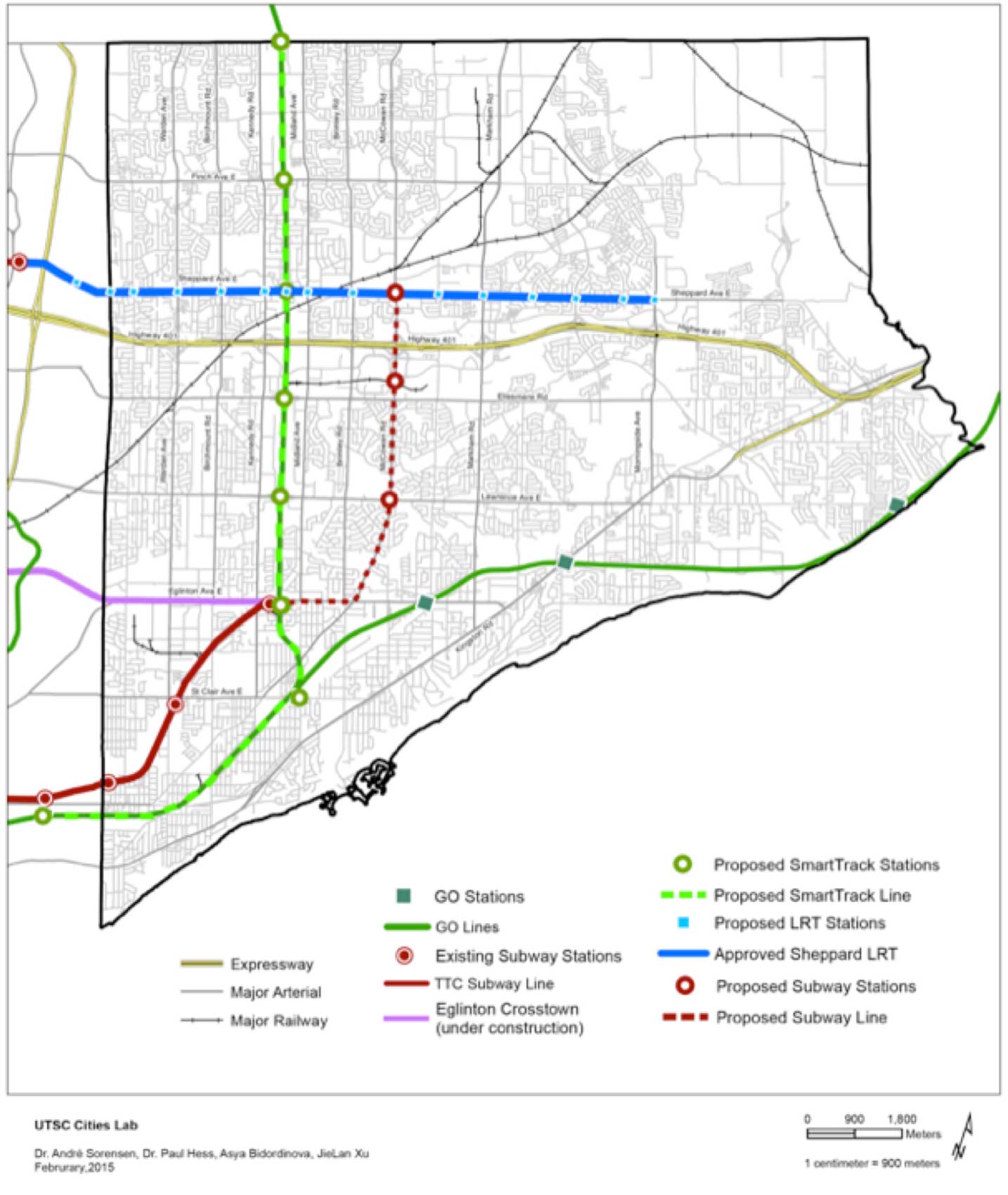Choices for Scarborough: Transit, Walking, and Intensification in Toronto’s Inner Suburbs



Author:Sorensen, Andre; Hess, Paul M.
Issue Date: 2015
Abstract (summary): Transit investment serves a dual purpose: that of providing better mobility options for existing residents and employers, and of encouraging new local investment and intensification that will lead to improved services, walkability, and livability in urban areas. Redevelopment and intensification, however, are more likely in some places than others. The existing built form, especially street configurations, housing types, and parcel sizes are important in shaping the pattern and quantity of new construction near transit stops. Therefore, any transit investment in the Toronto region should entail an examination of existing development patterns, land use, street networks, pedestrian access to transit stops, and development potential. These elements must be a major consideration in choices of transit routing and of transit technology. Building a high-‐capacity rapid transit line in an area with low or moderate intensity of land uses will make sense only if it is possible to redevelop and intensify lands within walking distance of the transit stops. Unfortunately, this consideration has not been a significant part of transit planning debates in the Toronto region. In this paper, we apply this approach to proposals for transit in Scarborough, a former city that now makes up the eastern part of the City of Toronto. Our findings show that because of their large lots and wide property frontages and the low current intensity of land use, Scarborough’s east-‐west arterials, such as Eglinton and Sheppard, present the best redevelopment opportunities. Our analysis further indicates that a combination of three LRT lines along these arterials would not only be cheaper and faster to build than a subway, but offers greater potential for attracting ridership and for spurring much-‐needed reinvestment in the area. By comparison, building the Scarborough subway extension from Kennedy to Sheppard Avenue, as approved by Toronto City Council in 2013, would be expensive, would be accessible by fewer potential riders from the surrounding neighbourhoods, and offers much lower potential for redevelopment along the corridor.
Description:Produced by The Cities Lab, University of Toronto Scarborough.